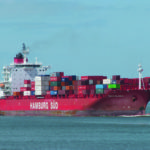In 2013, around 4 billion US dollars were pumped into the shipping business by private equity investors alone. Low newbuilding prices and the ultra-lax monetary policy are driving this development, writes Patrick Hagen
The headlines in the 2013 ship financing news clearly belonged to two companies – neither of which are among the traditional[ds_preview] players in the shipping world. Emanuele Lauro and his Scorpio Group with affiliates Scorpio Bulkers and Scorpio Tankers dominated the year’s headlines as much as private equity house Oaktree Capital Management. Both have shown that there is still enough money in the game for shipping in spite of many traditional lenders shying away from new deals. Scorpio has successfully collected fresh funds in Oslo and New York while investor Oaktree has been leading the growing number of private equity deals in the industry.
Emanuele Lauro and his Scorpio group were the hottest topic in shipping in most of 2013. »Lloyd’s List« named him »Man of the Moment« and put him on position 2 in its annual Top 100 of the most influential people in the shipping industry – only second to the seafarer in general. To a large extent, the accolades come from the way he collected investors’ money for its newest affiliate Scorpio Bulkers, which first traded on the over-the-counter market in Oslo and in December 2013 was floated in the USA. With this twin-strategy it set an example which was expected to be followed by others.
Private or public?
But not only Scorpio Bulkers successfully used an IPO for funding. By November 2013, the market had already seen seven IPOs and five over-the-counter listings, according to Clarksons. And experts such as Jefferies’ Jeff Pribor are expecting this wave to continue. However, a small setback for the market appeared when Blackstone-backed American Petroleum Tankers (APT) surprisingly pulled back from a planned IPO at the end of 2013 – a decision that left markets stunned.
In addition, 2013 was the year in which private equity finally became a significant force in ship finance – something that had been expected to happen for several years. The industry has seen a record inflow of money from private equity. By October, the shipping segment had attracted 2.7 bill. $, which is a quarter of what had been invested by private equity since 2008, according to consultancy Marine Money. By year-end it was already 4 bill. $, said former HSH Nordbank banker Christian Bock. He now runs CB Maritime Consulting in New York, which offers financial advisory services mainly for institutional investors and banks.
There are several reasons for this development. Prices for newbuildings are still very low. The need for funding is high in the industry as many of the traditional lenders are exiting the business or are massively downsizing their portfolios. In addition, the German KG market, which in its prime provided annually 3 bill. € of equity for shipping projects, has completely dried up.
Investors are looking for distressed assets
On the other hand, private equity investors are struggling increasingly to allocate their capital as there are almost no distressed industries anymore, said Mr. Bock. »Even the real estate industry has seen a comeback,« he said. Thus, shipping is offering a welcome opportunity.
1995-founded private equity house Oaktree Capital Management has stood in the forefront of this development. The company, which aims at keeping a low profile, has over the past year become one the most important players in the shipping industry without being a shipping company itself. The deals include Oaktree teaming up with Greek company Oceanbulk to order six wide-beam post-panamax boxships for more than 480mill. $. The 9,200 TEU vessels are to be built at Hyundai Heavy Industries in Korea.
In October, Navig8 Chemical Tankers, a joint venture between the Navig8 Group and Oaktree Capital Management, booked several chemical tanker newbuildings. Earlier in the year, the private equity powerhouse joined forces with German owner Bertram Rickmers to invest in panamax boxship newbuildings. But Oaktree is not only active in the newbuilding segment. In April, it bought from shipping financier Nordea loans taken out by Excel Maritime. In a well-noted deal with German lender Commerzbank, the private equity house also took a package of 14 chemical tankers. And in 2012, Oaktree had acquired shipping loans amounting to 750mill. $ from the 8 bill. $ portfolio of UK lender Lloyds Bank.
Growing number of PE firms involved
Oaktree may be among the most active but is by far not the only private equity player that became involved in shipping in 2013. Bertram Rickmers also teamed up with Apollo Global Management in a joint venture to invest up to 500mill. $ in secondhand tonnage. Carlyle and Interlink Maritime signed a 100mill. $ agreement for ten bulk carrier newbuildings, and hedge fund York Capital joined forces with New York-listed boxship player Costamare as well as with Augustea Bunge Maritime.
York significantly raised its shipping profile in 2013 and also managed to beat Oaktree in a kind of proxy war for the takeover of Maersk’s VLCC fleet. York backed Belgian tanker owner Euronav who was successful in acquiring Maersk’s 15 vessels strong fleet of VLCCs for 980mill. $. This reportedly left Peter Georgiopoulos furious, who had been aiming to take over the fleet himself with his General Maritime Corp (Genmar), which is majority-owned by Oaktree since its emergence from Chapter 11 proceedings. Genmar had previously secured a 200mill. $ capital injection by Oaktree and other investors, and seemed to be prepared for a fresh start among the leading tanker owners.
However, some experts remain skeptical whether the interest in shipping is sustainable. »At the moment shipping is the flavor of the month,« said Jens Rohweder, managing partner and founder of Hamburg-based Notos Consult, a financial adviser for shipping investors. Some of the deals done in 2013 were not typical private equity investments. »That they are now buying shipping assets is very uncommon compared to their traditional investment criteria,« he said. This could change again. »The interest is also due to the ultra-lax money policy of the Fed,« Mr. Rohweder stressed.
Later recovery expected
So there is danger, should the Fed get serious with the tapering of the stimulus. Investors could be tempted to scale back their investments in risky assets – such as shipping – and instead put their money in more secure investments. This could leave owners, which have become too reliant on the new investors, in a bad spot.
There are not only worries in the industry about the way private equity investors might exit their investments, but also about the impact of their funds on the market. Shipping guru Martin Stopford warned about the problems resulting from surplus investment funds in a well-noticed speech in Shanghai. And Diana Shipping president Anastasios Maragaronis blamed private equity for the delay in a recovery of the dry bulk market. »The recovery, when it comes, is going to be later and weaker than it would otherwise be without this infusion of capital,« he said in November 2013, according to shipping paper »Tradewinds«.
This doesn’t defer other, though. Not only private equity investors, hedge funds and other institutional investors have found a fresh interest in shipping in the last year. US banks have also become more active again, Mr. Bock has noticed. »Some large players such as Citigroup have been active more or less the whole time, but now we see other US banks as well.« He named Regions Bank, Wells Fargo and Key Bank as examples. »These are large banks with regard to their balance sheet, but they are primarily focused on the US market,« Mr. Bock added.
In addition, US bank CIT returned to the shipping world in late 2012 after it had more or less stood on the sidelines digesting its bad experiences from the 1990s. The institute appointed maritime finance specialist Svein Engh and formed a strategic alliance with Norwegian investment bank RS Platou.
However, the business of the US banks is still limited. »In absolute figures their lending volume is still small compared to the Scandinavian banks,« said Mr. Bock. »The financing gap has been closed by bonds, private equity and IPOs,« he added. »In 2013, listed shipping companies have raised 8 bill. $ by IPOs or secondary offerings on the stock exchange.«
»The prettiest girls in the room«
Not all segments of shipping benefitted the same from the interest of investors.
Niches such as LPG vessels, product gas or chemical tankers and companies trading under Jones Act regulation have been most in demand. »Compared to previous cycles we are seeing more interest in subsectors rather than just broad categories like dry and wet,« Jeff Pribor of investment bank Jefferies said in an interview with »Tradewinds«.
For Scorpio president Robert Bugbee Very Large Gas Carriers (VLGC) were »the prettiest girls in the room«. His remark came after the sale of Scorpio’s fleet to Dorian LPG in return for a 30 % stake in the company. The shale gas boom in the USA also had its effect on shipping markets. Especially the combination of transporting shale gas on Jones Act Tankers was a perfect combination for shipowners, which saw freight rates as high as 100,000 $ per day.
Author:
Patrick Hagen, Shipping journalist
Pressebüro Fromme, Cologne / Germany
Tel. +49 (0)221/51 20 07
Patrick.Hagen@pressebuero-fromme.de
Patrick Hagen


















